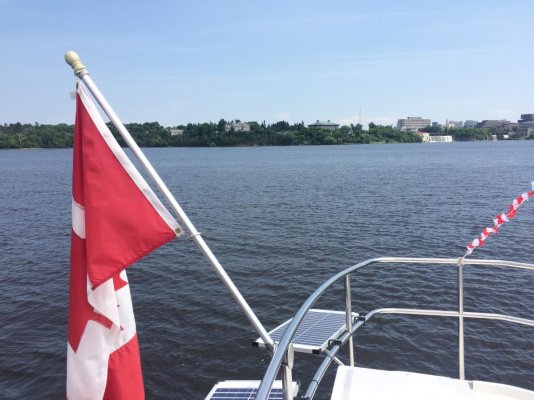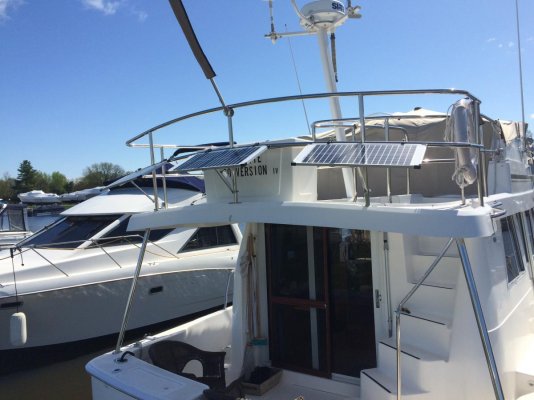Did a bid to searching for solar panels for the boat and there's a LOT of stuff out there!
Need some basics and recommendations.
Currently have four 6v AGMS which yield 440a at 12v, of which 220a is usable, not discharging below half.
Goal:
Be able to charge up the batteries after using them overnight, when they are down around 12.2 volts.
And charge them, while they are powering a fridge or two and some small stuff, perhaps 5a worth.
And just to maintain the batteries at the dock.
Would prefer a hard or semi hard panel. Looked at mounting to the Bimini top, a possibility, also considering a hard top, which should be fine. If not, some sort of railing mount, maybe something that swings up on the side.
Questions:
How much is enough?
How big are the panels for xxx power?
Can one recommend some good brands and companies to deal with?
Is monocrystaline the best material?
Will these things withstand the summer heat in FL, when I'm sure they will be north of 130d?
=====
Another wild question:
Is it possible to get 220v out of a solar array? I'm not able to get dock power to my boat for awhile, and it will be expensive... just wondering if some sort of 220v power is an option.
Need some basics and recommendations.
Currently have four 6v AGMS which yield 440a at 12v, of which 220a is usable, not discharging below half.
Goal:
Be able to charge up the batteries after using them overnight, when they are down around 12.2 volts.
And charge them, while they are powering a fridge or two and some small stuff, perhaps 5a worth.
And just to maintain the batteries at the dock.
Would prefer a hard or semi hard panel. Looked at mounting to the Bimini top, a possibility, also considering a hard top, which should be fine. If not, some sort of railing mount, maybe something that swings up on the side.
Questions:
How much is enough?
How big are the panels for xxx power?
Can one recommend some good brands and companies to deal with?
Is monocrystaline the best material?
Will these things withstand the summer heat in FL, when I'm sure they will be north of 130d?
=====
Another wild question:
Is it possible to get 220v out of a solar array? I'm not able to get dock power to my boat for awhile, and it will be expensive... just wondering if some sort of 220v power is an option.



